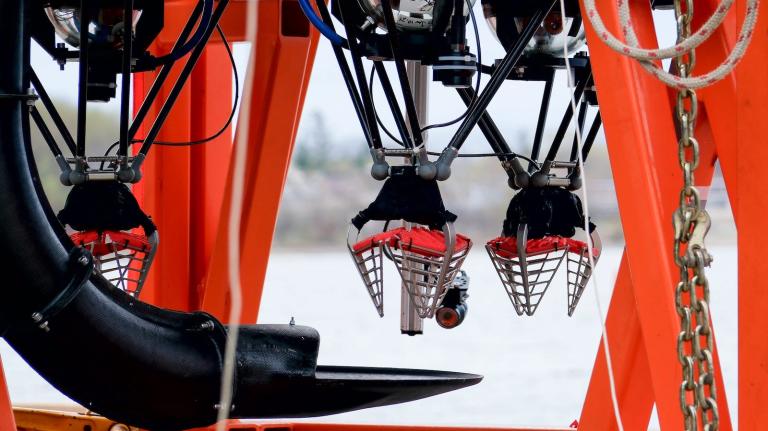A special report from Gainesville, Florida.
Robert Ponzio, art instructor and chair of the Fine Arts Department at Oak Hall School took to the skies Sunday above Florida’s Kennedy Space Center in a specially modified, G-FORCE ONE aircraft. Working in a near weightless environment traditionally reserved for astronaut training and scientific experimentation, Ponzio hopes to inspire students to pursue careers in science. He also aspires to forge a stronger, academic alliance between the traditional sciences and the creative arts.

You can follow Ponzio’s adventure on the plane nicknamed the “vomit comet” at his blog, Hardcore Painting. For those readers who want to go weightless, it’s about $5,000 a pop. Info here.
“Solving unprecedented problems of achieving energy independence, protecting the biosphere, and mitigating climate change will require visionary thinking, extraordinary innovation, and sometimes, breakthrough technologies. Focusing on traditional academic courses is essential, but not enough,” Ponzio said, noting Daniel H. Pink’s Wired Magazine article, “Revenge of the Right Brian.”
Pink suggests that while the left-brain’s logical, analytical talents measured by SATs and deployed by CPAs are still necessary, they are no longer sufficient. Pink writes:
[T]he abilities that matter most are now closer in spirit to the specialties of the right hemisphere – artistry, empathy, seeing the big picture, and pursuing the transcendent … to detect patterns and opportunities … and to come up with inventions the world didn’t know it was missing.”
Ponzio agrees, and adds, “The process of creating art requires students to engage observational skill which allows them to see beyond stereotypes, and recognize exactly what the eye sees, as they organize space and form. The Arts must play a vital role in raising the new generation of problem solving innovators that we desperately need.”
I certainly agree, since logic alone is never going to motivate enough people to do what is necessary to save the health and well-being of future generations (see Why scientists aren’t more persuasive, Part 1 and Why scientists aren’t more persuasive, Part 2: Why deniers out-debate “smart talkers”).
The G-FORCE ONE aircraft’s parabolic flight path will allow Ponzio fifteen, 30-second periods of near Zero Gravity. Through his visual experiments, Ponzio hopes to expressively capture the moment while also creating images which inspire his students to recognize the fragility of the earth and understand the important role science has in protecting it. The first will be a Calligraphic Brush Painting inside a containment unit. A high-speed video camera will record the fluid dynamics of colored inks in Zero Gravity. The second experiment will be a free floating, expressive drawing using dry media on papers mounted to the walls of the aircraft. “This is a once-in-a-lifetime opportunity for me,” says Ponzio, “and I hope to share with all art and science students, the excitement of creating work within the chaos of microgravity.” Ponzio has involved his students by simulating the Zero Gravity flight by suspending them in the air hanging with inversion boots while creating art works. His popular blog chronicles his creative process and preparation for this extraordinary venture.
Ponzio applied for, and won a grant to participate in this microgravity program which is sponsored by NASA, The Stephen Hawking Microgravity Education and Research Center, Space Florida, and The Zero Gravity Corporation. Space Florida, the new state agency charged with promoting Florida’s space industry, and The Zero Gravity Corporation have created the Florida Microgravity Education and Research Center, to facilitate Florida teacher and student space education and aerospace microgravity research expertise. This is the last flight of its kind, as funding has been cut.
You can read a news account in the Gainesville Sun here.
Read what Ponzio has to say about global warming here.
This post was created for ClimateProgress.org, a project of the Center for American Progress Action Fund.


